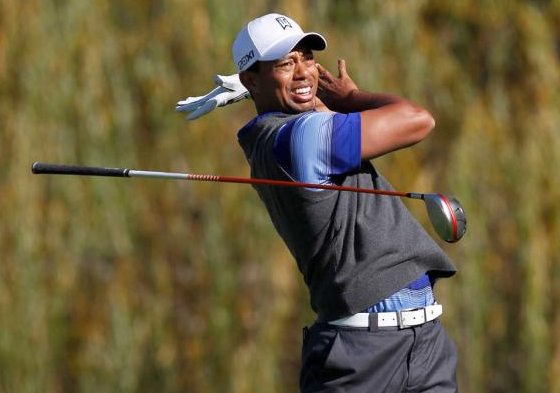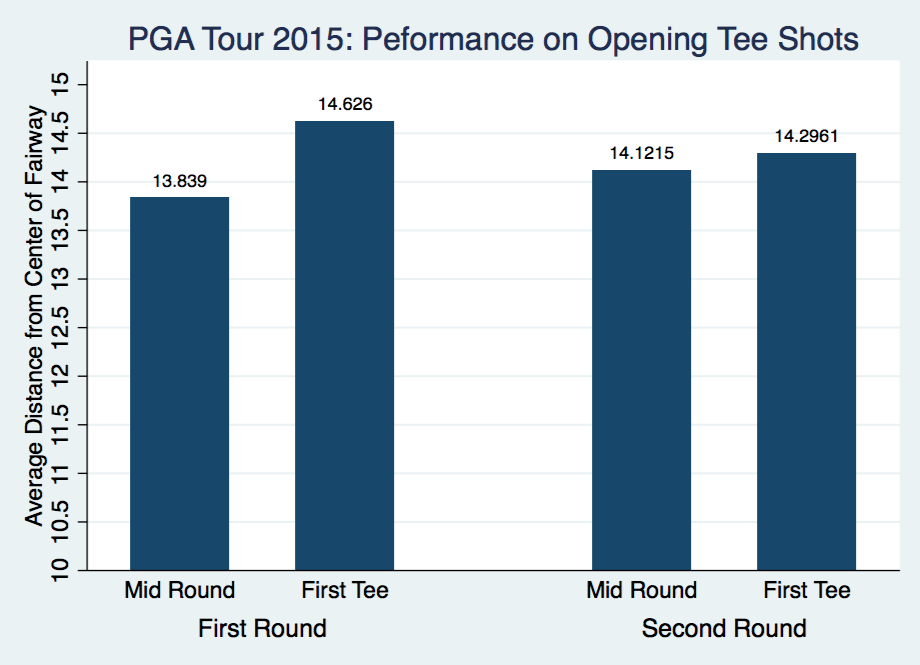
Allow me to tell a story…It’s sometime post-2009 Tiger Woods scandal – so he has lost the magic Tiger aura. Tiger is in contention heading into the final round, and I’m absolutely revved up to sit on the couch screaming at my TV for the next 5 hours, ultimately hoping to see a classic Tiger win. We’re nearing go-time for Tiger and he’s on the range. Golf Channel has the Protracer out, Tiger is working his way through the bag, Brandel is rattling off various statistics and critiquing Tiger’s swing – all the while Tiger is striping shot after shot. Tiger gets to the driver, which has always been his Achilles heel, and he continues to stripe it. I watch him hit 15 pure drivers with very little curve – today is going to be a good day. With his range session complete, Tiger heads to the first tee, I head to the couch, and moments later Tiger is standing over his opening tee ball. He takes a mighty swing and the camera stays on Tiger, then tries to find the ball …..”FORE!”…the ball lands in the gallery left of the fairway and commotion ensues. Tiger’s figure slumps in disgust, he mutters an F-bomb, as do I, and a mediocre day of golf follows. This was a common occurrence for Tiger post-2009. Despite his game being in pretty good shape, he often hit awful opening tee shots (how many pull-hooks did he hit off the first tee at the Masters? – Hint: It equals the number of rounds he played there) which sets a negative tone for the day. This long-winded introduction motivates my question for today: do first-tee nerves causes golfers to perform significantly worse than usual?
In an ideal world, to asses whether a golfer’s performance is hindered on opening tee balls, I would like to observe players hitting a tee shot on their first hole of the day, and then also observe them hitting this same tee shot in the middle of the round. Clearly, I don’t have data for this as players do not play the same hole twice in the same day. However, as most of you know, in a typical PGA tour event players will play one of their first two rounds starting on the front 9 (hole #1) and will play the other day starting on the back 9 (#10). Therefore, it seems like we should compare the same player hitting his tee balls on #1 on the 2 days (one of these will be his opening tee shot, the other will not). However, I don’t want to do this. My main issue is that playing conditions could differ between the two days – the tee boxes could be in different positions, weather could be different, etc. To be clear, my concern is that comparing the opening tee ball on #1 on Thursday to the tee shot on #1 on Friday (which would be the player’s 10th hole of the day) may capture differences other than just 1st tee nerves, such as a change in playing conditions.
To get past this, what I am going to do is compare the average performance of players on hole #1 who started on that hole, to the average performance on hole #1 of players who started on hole #10, on the same day. The reason this works is that it is essentially random who starts on the back 9 versus front 9. There is no reason to suspect that all the best players started on hole #1 on a given day for example, which would bias our results. So on any given Thursday or Friday in a PGA Tour event, I observe a group of players playing hole #1 as their first hole, and another group playing it as their 10th hole. The difference in the average performance of these two groups on holes #1 and #10 should reflect the impact of first-tee pressure. This is exactly what I want.
In economics, this is what we would call a natural experiment. The PGA Tour has essentially provided me with a randomized experiment to assess the effect of first tee jitters! We call it a natural experiment because clearly it is not a real experiment – “nature” has provided us with it.
To the data. First, using Shot Link data from the PGA Tour in 2015, I focus only on rounds 1 and 2 of tournaments that started off both the 1st and 10th tees. I calculate the average distance from the center of the fairway on tee shots hit on hole #1 for players who started on that hole, and compare that to the average for players on #1 that started on #10 that day (so they are hitting that tee shot in the middle of their rounds). I do this separately for rounds 1 and 2, and also do it for hole #10. The results are summarized in the following graph:

Interesting. In the first round of a tournament, players are, on average, almost a full yard further from the center of the fairway when they play a hole as their opening hole versus when they play it in the middle of the round. However, this difference all but disappears when I do the same analysis for the second round. One explanation for this could be that there are slightly more nerves on a player’s opening tee shot of the tournament, as compared to their opening tee shot in the second round. From my experience playing multi-day tournaments, I feel as though there was more pressure on the first round opening tee ball than any other tee shot. But other explanations are possible – and ultimately these differences are not that large (1 yard further offline is not a huge loss in accuracy).
To wrap things up, I want to see if there is something in the data to back up my story in the introduction. In the graph below, I compare Tiger’s opening tee shots to all his other tee shots during the years 2010-2015 (excluding par 3’s). Note that because I am analyzing data for a single player, I can no longer use the method I used above (comparing players on the same day playing holes 1 and 10 at different times in their rounds). But, ultimately, with enough observations I think we can get the general picture of things by just comparing Tiger’s opening tee balls to all his other tee shots. Here’s the graph:

Wow, shocker! In all but the third round Tiger performs better off the first tee than he does the rest of his round. I suppose the disclaimer here is that the number of observations for the averages off the first tee (“F.Tee”) for each round are between 40-50 observations; so quite small. From basic statistics we know that fewer observations means less precise estimates. Therefore, the “F.Tee” averages above have some errors associated with them (whereas my earlier estimates used thousands of observations and the estimation error can basically be ignored). However, the averages for the rest of the round tee shots (the bars labelled “Mid”) are all using a few hundred observations – and these indicate that Tiger’s accuracy off the tee steadily improves from rounds 1 to 4, another shocker really.
I have to say these results are very surprising. As for my introductory story… perhaps I only remember the days Tiger hits bad opening tee shots, and when he stripes one down the middle I don’t think anything of it. Also, this is probably not that important, but the Masters was not included in this sample which was a place where Tiger hit many a bad opening tee shot. In any event, these results were unexpected, and illustrate the fact that the data can sometimes tell a very different story from the one we expect.

I think you might want a column for drive distance alongside each column for distance from center. It’s possibly Tiger clubbed down and/or hit a fairway finder ‘stinger’ shot to get off on the right foot and ease into the tournament.